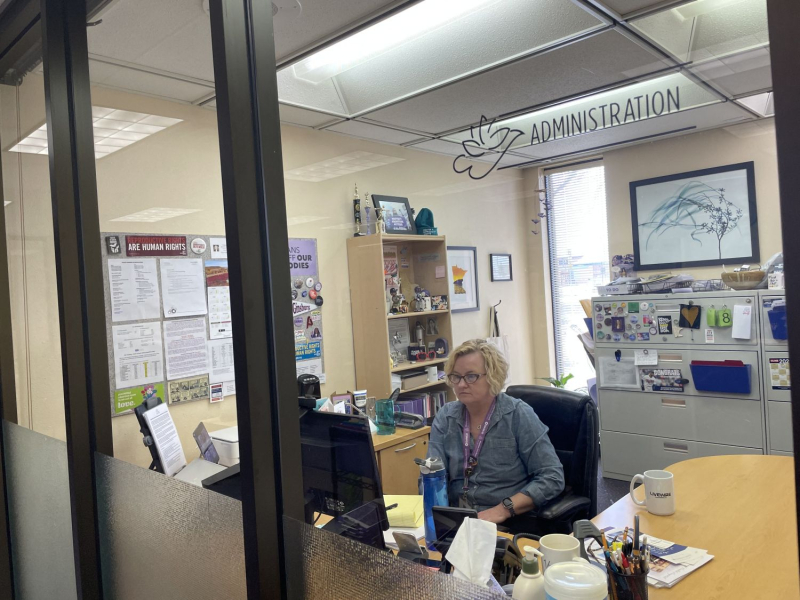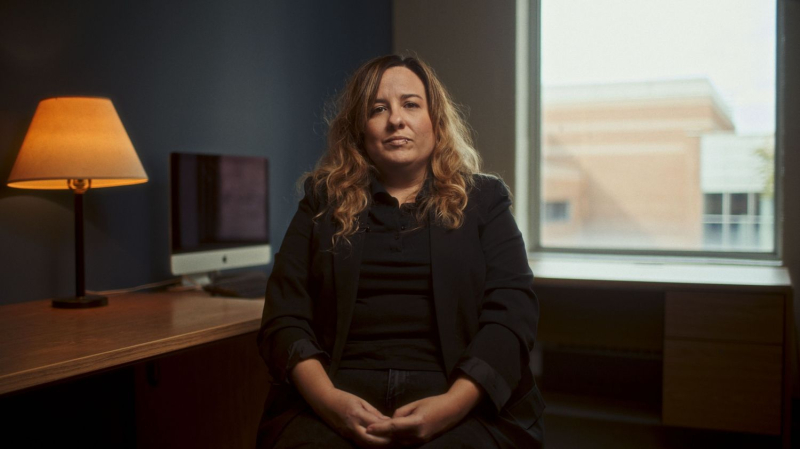Jasmine Legendre
Published at 0:00
- United States
The day after the invalidation of the decision Roe v. WadeIn June 2022, the Red River Women’s Clinic, formerly located in Fargo, North Dakota, decided to move. It relocated to Moorhead, in neighboring Minnesota, to avoid new laws that banned abortions in almost all cases. “It was really important for us to move, since we were one of the only clinics in a large area that performed abortions,” the clinic’s director, Tammi Kromenaker, told Le Devoir.
As the November 5 vote approaches, abortion remains one of the issues that seems to divide American voters the most. “The issue of abortion has been divisive since I began my career, more than 30 years ago,” notes Kromenaker.

Photo: Ines Bel Aiba Archives Agence France-Presse Tammi Kromenaker in her office in Moorhead, Minnesota
Yet according to the Gallup polling firm, which has been tracking Americans' views on abortion since 1975, only 12 percent believe it should be illegal at all times. The seven referendums on the issue that have been held in various states since the overturning of Roe v. Wade support these statistics: in all cases, citizens voted to protect the right to terminate a pregnancy or refused to impose more restrictive measures.
So how did abortion become one of the decisive themes in the context of elections? ? “We took this issue from the medical field and brought it to the political field, and it became an electoral issue,” explains Andréanne Bissonnette, associate researcher at the Raoul-Dandurand Chair’s Observatory on the United States.
Trust and Puritanism
The issue of abortion rights has been very present in the public space since the Roe v. Wade ruling, which dates back to 1973. This guaranteed legal access for at least the first three months of pregnancy, but termination of pregnancy was once practiced completely legally. “If we look back from before the founding of the United States to the middle of the 19th century, the issue of abortion was not discussed at all in the public space. It was something that was tolerated,” explains Véronique Pronovost, researcher and doctoral student in sociology and feminist studies.
Women were trusted to have the procedure performed before the point of limbering up, which is when the fetus begins to move in the mother’s womb. “We trusted pregnant women completely to say whether or not the [limbing up] had happened, and therefore whether getting an abortion was something moral,” adds Ms. Pronovost.
200% Deposit Bonus up to €3,000 180% First Deposit Bonus up to $20,000 
Photo: Guillaume Levasseur Le Devoir Véronique Pronovost, researcher and doctoral student in sociology and feminist studies
At the time, abortions were not necessarily performed by the medical profession. “Therefore, there was a desire among doctors to take up this procedure and ban it. There was subsequently a domino effect of laws that banned access to abortion,” illustrates Ms. Bissonnette.
At the same time, there was a rise in puritanism and conservative values in the United States. “Everyone who belonged to this culture of puritanism believed [that abortion] attacked the fundamental point of society, which was the family,” says Véronique Pronovost.
In the 1960s, feminist movements spoke out to denounce the ban in the hopes of relegalizing abortion. The result was the Roe v. Wade, and since then, American politicians have been torn apart over this issue. “Since 1973, we have seen laws being put in place, […] and through their adoption, there has been legal challenge from pro-choice movements. We find ourselves in a situation where the Supreme Court has been forced to rule again on the issue of abortion on several occasions. […] With each new decision, the Supreme Court has given more latitude to states to legislate on access to abortion,” explains Ms. Bissonnette.
Even before the invalidation of Roe v. Wade, some states had so many restrictions on abortion clinics that access to care was already unequal across the country. “When we provided abortion care in North Dakota, there was a 24-hour waiting period. We also had to give patients paperwork from the state to discourage them from having an abortion. […] We were also required to use the ideological language of the state,” says Tammi Kromenaker, who can now provide abortion care with a more humane approach.
An Uncertain Future
While there is a common misconception that all Democrats are pro-abortion and all Republicans are against it, the reality is more nuanced when you give the public a voice. Indeed, among Republican voters, 41% say they support abortion in all or almost all cases, according to a Pew Research Center study.
On November 5, Americans in 10 states will vote on the issue of abortion in addition to electing a president, among other things. Can things really change? ? To codify Roe v. Wade(in the case of a Harris administration) or restricts federal abortion rights (in the case of a Trump administration), we would need a Democratic-majority Congress or a Republican-majority Congress, respectively. “It’s not guaranteed, either way,” concludes researcher Bissonnette.
With Laurence Thibault

